Nestled within Saudi Arabia's Najd region lies Ushaiqer Heritage Village, one of the kingdom's most ancient settlements. This architectural marvel stands as a testament to traditional mud brick craftsmanship, showcasing centuries of meticulous construction techniques and cultural evolution. Situated roughly 200 kilometers northwest of Riyadh, this remarkably preserved historical enclave has garnered exceptional visitor acclaim, boasting a 4.6 out of 5 rating on Tripadvisor, solidifying its place among Saudi Arabia's must-experience cultural destinations.
The name "Ushaiqer" itself unfolds a captivating narrative—translating to "Small Blonde" in Arabic, it references the distinctively red-hued mountain overlooking the settlement. This quaint village served a crucial historical purpose as a vital waypoint for pilgrims journeying from Kuwait, Iraq, and Iran toward Mecca and Medina for Hajj or Umrah rituals. Time might have weathered its walls, yet dedicated restoration efforts by both local families and governmental bodies have skillfully preserved the settlement's cultural essence for contemporary visitors and future generations alike.
Wandering through Ushaiqer reveals a labyrinth of narrow passageways bordered by exquisitely preserved traditional structures, each corner presenting remarkable photographic possibilities. Beyond architectural splendor, the village harbors the legacies of historically significant families, including the influential Al-Hussaini and Al-Elsheikh lineages, whose contributions shaped regional development throughout the centuries. The authentic Saudi experience culminates as hospitable locals welcome visitors with aromatic traditional coffee and sweet dates—a timeless ritual offering genuine insight into the traditional Saudi way of life that continues to thrive within these ancient walls.
Ushaiqer Heritage Village carries within its ancient walls a tale spanning approximately 1,500 years, dating back to when the earliest inhabitants established their presence in this enchanting corner of Saudi Arabia's Najd region. This modest settlement, seemingly unremarkable at its genesis, gradually blossomed into a cornerstone of cultural significance across the Arabian Peninsula.
Bedouin tribes first established this desert haven, which swiftly evolved into a crucial resting point along a prominent religious pathway. The strategic positioning of Ushaiqer rendered it immensely valuable for devotees traveling westward to fulfill their spiritual obligations. Pilgrims journeying from Kuwait, Iraq, and Iran regularly sought refuge here during their sacred treks toward the Hajj or Umrah rituals.
Nature's generosity bestowed Ushaiqer with remarkable advantages for exhausted wayfarers. Abundant springs bubbled forth life-sustaining water, while lush gardens and verdant palm groves offered essential shade and nourishment. These natural blessings fueled the village's gradual expansion throughout the centuries, solidifying its reputation as an indispensable sanctuary along the pilgrimage route.
The village bore a different identity in its earliest days. Originally known as "A'ekel," its nomenclature evolved over generations. The current name "Ushaiqer" stems from "Shaqra," the Arabic word for "blonde."
This peculiar designation references the striking reddish mountain that flanks the northern boundary of the settlement. Though contemporary observers perceive the mountain as decidedly red, historical linguistic practices in local dialect used "red" and "blonde" interchangeably. Thus, "Ushaiqer"—translated as "Small Blonde"—characterizes this commanding geographical landmark that towers above the ochre-hued mud-brick dwellings below.
The historical records place Ushaiqer within the domain of the Tamim tribe, though numerous other tribal groups established residency throughout its extensive chronology. The village gained particular distinction as the ancestral homeland for several families whose influence would eventually extend throughout the Arabian Peninsula.
These distinguished lineages include:
Beyond serving as a cradle for influential families, Ushaiqer distinguished itself as a preeminent scientific hub within Najd for three centuries. The village's educational institutions produced generations of scholars and scientists who specialized in judicial matters, religious edicts, and academic instruction.
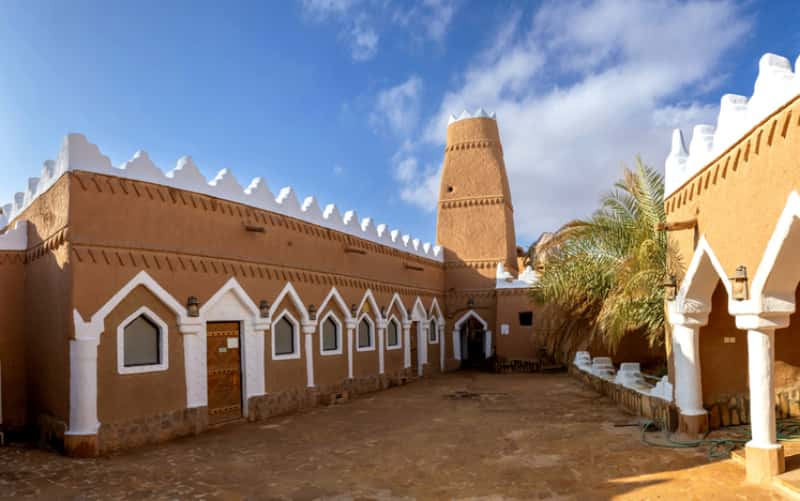
Venturing through the maze-like pathways of Ushaiqer Heritage Village transports visitors into a living architectural museum unlike any other. Massive walls encase this historical treasure, revealing centuries-old secrets around every corner. Shaded passages and timber-framed walkways connect hundreds of mud houses, each telling its own story of times long past.
Najdi architectural brilliance dominates the village landscape through distinctive triangular windows, wooden doors adorned with intricate carvings, and masterful mud-brick construction techniques. Family names still mark many dwellings, preserving ancestral connections across generations. Construction methods followed precise traditional formulas—clay walls rising from limestone foundations, while roofs combined tamarisk and palm trunks covered with palm frond mats and a protective clay layer. Wealthier families distinguished their homes by substituting stone for palm leaves, creating more durable structures that have withstood centuries of desert elements.
Al Salem Museum emerges as the crown jewel among village attractions, housing collections meticulously curated by dedicated residents. Artifacts range from delicately embroidered traditional garments to gleaming jewelry pieces, finely crafted ceramics, historical weaponry, and everyday cooking implements. Museum custodians frequently accompany visitors, sharing captivating details about each exhibit's historical significance and cultural context, effectively opening windows into everyday life from bygone eras.
Historical mosques punctuate the village landscape, each displaying architectural elements unique to the region. Faylaqiya Mosque, the Northern Mosque, and al-Jami' Mosque stand as particularly significant religious landmarks. Lush palm groves bisect the settlement, creating natural green corridors among the earthen structures. Approximately 600 orchards encircle the village, sustained by an ingenious irrigation network fed by 80 hand-carved freshwater wells—a remarkable testament to ancestral knowledge of desert survival and agricultural innovation.
Photography enthusiasts discover paradise within Ushaiqer's ancient walls:
Desert temperatures outside frequently soar to 47°C, yet the village interior remains surprisingly comfortable. This remarkable climate control stems not from modern technology but ancient architectural wisdom—walls and pathways designed to maximize shade and air circulation, demonstrating practical knowledge passed through countless generations of desert dwellers.
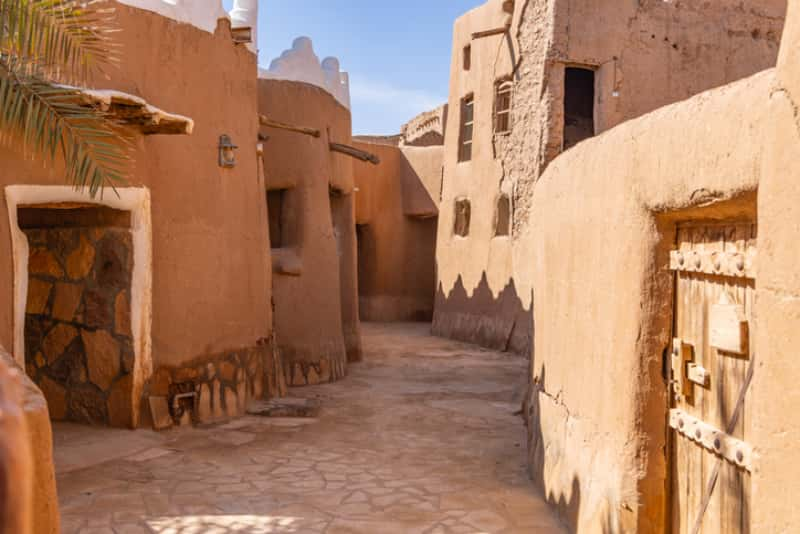
Cultural experiences reach their zenith when human connections form their foundation, and Ushaiqer Heritage Village exemplifies this principle magnificently. Saudi hospitality blossoms here in myriad unexpected ways, enveloping visitors within the warm embrace of this living historical treasure.
Residents of Ushaiqer demonstrate remarkable dedication to their ancestral home, having collectively marshaled resources to revitalize what once stood as a deteriorating mud settlement. Their commitment extends beyond preservation—these same inhabitants regularly welcome travelers into their weekend residences, offering coffee and dates with characteristic Arabian generosity.
Guided explorations elevate this experience substantially. Numerous visitors speak glowingly of Abdulaziz, an erudite local guide whose fervent appreciation for Saudi heritage transforms routine sightseeing into profound cultural journeys. His linguistic prowess in both English and Arabic enables him to convey nuanced cultural intricacies while addressing inquiries about desert-dwelling traditions with remarkable depth.
Ushaiqer Village reveals its soul through the age-old custom of Arabic coffee and date sharing. Far beyond mere refreshment, this practice represents a cultural ceremony embodying centuries of Bedouin hospitality traditions.
Your journey through the village might include:
These culinary moments become extraordinary when accompanied by narratives from guides and villagers—tales that animate the ancient walls surrounding you, forging multisensory connections to bygone eras.
Weekend vitality surges through Ushaiqer Heritage Village when Riyadh families return to their hereditary domiciles. Some undertake weekly sojourns to dwellings where their grandmothers once resided—a touching testament to familial continuity. These weekend returnees frequently extend warm welcomes to tourists, occasionally providing spontaneous tours through their family compounds.
Fortune might favor you with an invitation to share traditional meals served upon flying blankets beneath shaded recesses or atop rooftop terraces overlooking the entire settlement. Such unplanned demonstrations of hospitality create indelible impressions of authentic Saudi culture—moments that often become treasured memories of Ushaiqer long after travelers have departed its ancient mud-brick confines.
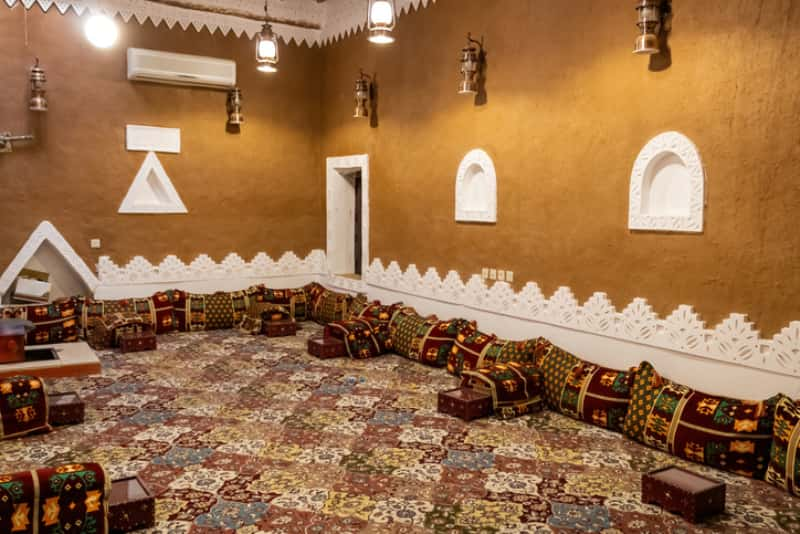
Journeying to Ushaiqer Heritage Village requires thoughtful preparation to fully appreciate this historical treasure nestled within Saudi Arabia's Najd region. Careful planning ensures you witness every notable aspect of this remarkable settlement.
Ushaiqer Heritage Village sits approximately 200 kilometers northwest of Riyadh, positioning it perfectly for day excursions from the capital. Travelers find personal vehicles most convenient, with the journey spanning roughly 2-2.5 hours along well-maintained roadways. The route follows Makkah Road (Route 40) outward from Riyadh, continuing past the initial checkpoint before turning right at the first exit toward Shaqra (Highway 505).
Several alternative transportation options exist:
Seasoned visitors recommend scheduling your exploration between September and April when the climate proves most agreeable. Weekends witness the village pulsing with renewed energy as families return from Riyadh to their ancestral dwellings, creating a more authentic cultural atmosphere.
The central museum welcomes visitors daily from 8 am until Isha prayer (evening). Friday schedules include a brief closure during Dhuhr prayer, with reopening occurring around 1 pm. Museum entry requires 10 SAR. Those seeking authentic local cuisine might note the on-site restaurant commences service at 1 pm on Fridays.
Prudent visitors equip themselves appropriately for Ushaiqer exploration:
Visitors should anticipate substantial walking through this authentic heritage site. The village configuration presents intricate winding passageways connecting hundreds of mud structures, organized into distinct districts and divided by verdant palm groves.
The surrounding region offers numerous complementary sites worthy of exploration:
Recent preservation initiatives have heightened Ushaiqer's popularity among tourists. Consequently, weekday visits often provide a more contemplative experience away from weekend crowds.
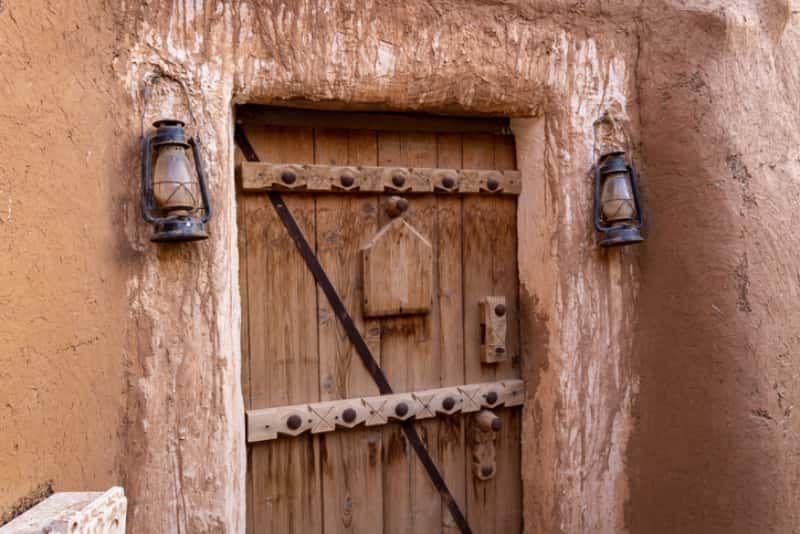
Ushaiqer Heritage Village emerges as an extraordinary chronicle of Saudi Arabia's cultural legacy etched in mud and memory. Spanning fifteen centuries, this remarkable settlement has transformed from a crucial pilgrimage waypoint into a living historical repository showcasing exquisite Najdi architectural traditions. Visitors wandering through its maze-like passages encounter stories embedded within every ornately carved wooden doorway, triangular window, and ingeniously constructed mud-brick dwelling—each element revealing ancestral wisdom about thriving amid harsh desert conditions.
The profound connection many Saudi families maintain with Ushaiqer becomes immediately apparent as weekend returnees breathe contemporary life into ancestral dwellings. This continuing tradition adds remarkable authenticity to the visitor experience. Steaming cups of fragrant Arabic coffee served by generous residents like Abdulaziz create moments of cultural exchange impossible to replicate in more commercial settings.
Ushaiqer's strategic position, merely 200 kilometers from Riyadh, presents an exceptional opportunity for travelers seeking immersion in authentic Saudi culture without extensive travel commitments. The settlement harmoniously balances historical significance with natural splendor—evident in its verdant palm groves, sophisticated ancient irrigation networks, and the distinctive reddish mountain that bestowed the village its poetic name.
Visitors find themselves captivated by diverse aspects of Ushaiqer's charm—whether admiring architectural innovations, discovering the legacies of influential families such as Al-Hussaini and Al-Thani, or capturing the photogenic interplay of light and shadow across ancient mud walls. Ushaiqer offers something increasingly rare in our modern world: an unbroken connection to centuries past. This hidden cultural treasure deserves prominent placement on any Saudi Arabian exploration itinerary—a destination where time-honored traditions flourish within meticulously preserved structures under the watchful gaze of a mountain once described as "small blonde."
Q1. What is the significance of Ushaiqer Heritage Village?
Ushaiqer Heritage Village is one of the oldest settlements in Saudi Arabia's Najd region, showcasing traditional mud brick architecture and over 1,500 years of history. It was once a major stopping point for pilgrims and is now a well-preserved historical site that offers visitors a glimpse into traditional Saudi life.
Q2. How did Ushaiqer get its name?
The name "Ushaiqer" means "Small Blonde" in Arabic, referring to a nearby reddish mountain that borders the northern side of the village. Historically, the colors red and blonde were used interchangeably in the local dialect, hence the name.
Q3. What can visitors expect to see in Ushaiqer Heritage Village?
Visitors can explore narrow streets lined with traditional Najdi architecture, visit private and public museums showcasing local artifacts, see historical mosques, and enjoy photo-worthy alleyways and rooftops. The village also features lush palm groves and an ancient irrigation system with hand-carved wells.
Q4. How can I experience local culture in Ushaiqer?
You can experience local culture by joining guided tours, meeting residents who often invite visitors for coffee and dates, and potentially participating in cultural events, especially on weekends when families return to their ancestral homes. You might also have the opportunity to taste traditional Najdi meals and listen to local stories.
Q5. What's the best way to visit Ushaiqer Heritage Village from Riyadh?
The most convenient way to reach Ushaiqer is by car, which takes about 2-2.5 hours from Riyadh. The best time to visit is between September and April when temperatures are more comfortable. It's recommended to bring comfortable walking shoes, sun protection, and a camera to capture the unique architecture and experiences.
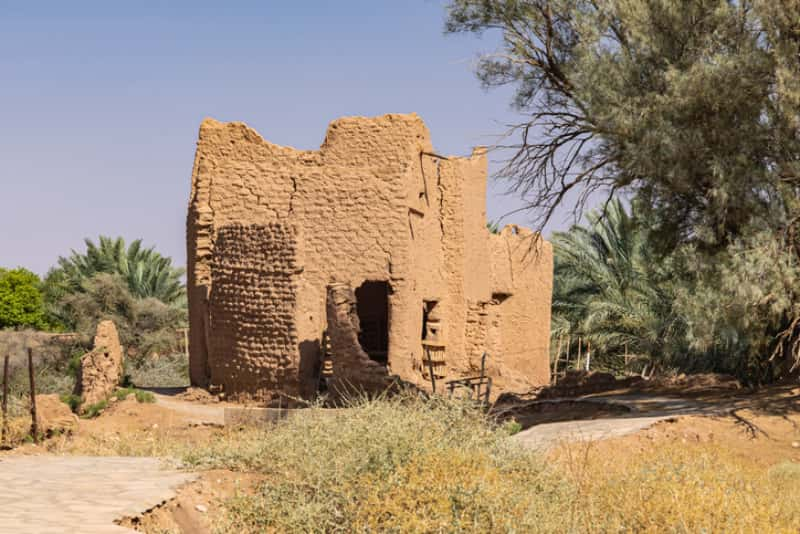
Find Related Tours


© Copyright 2024 Go Saudi Arabia Trips. All Rights Reserved.